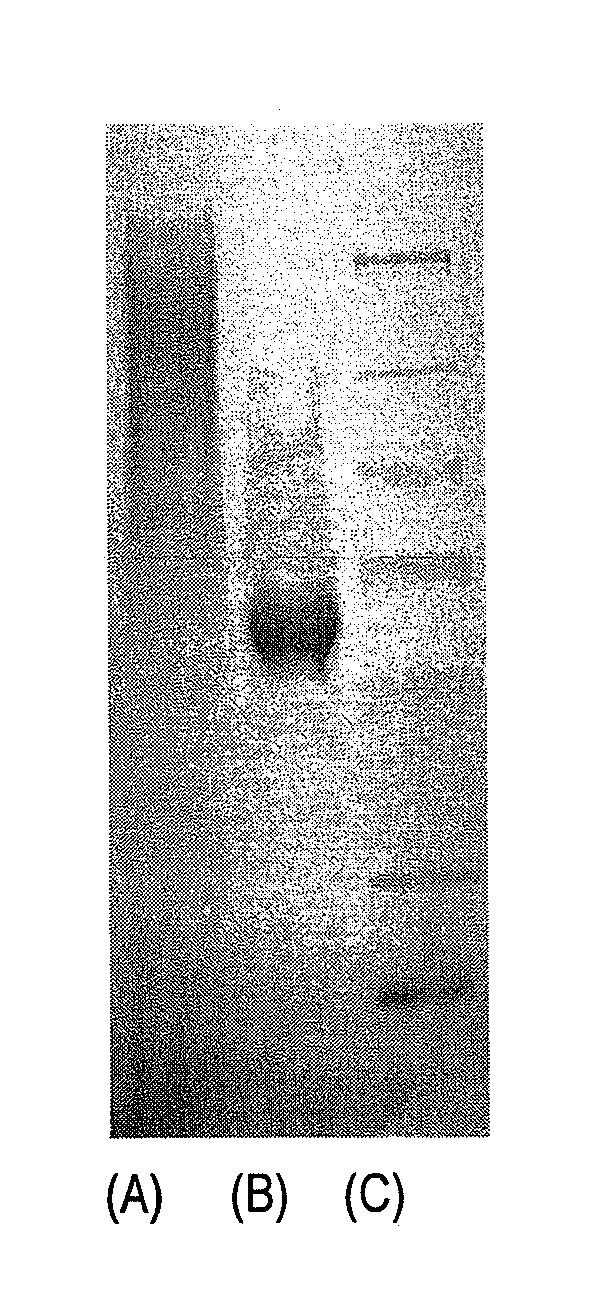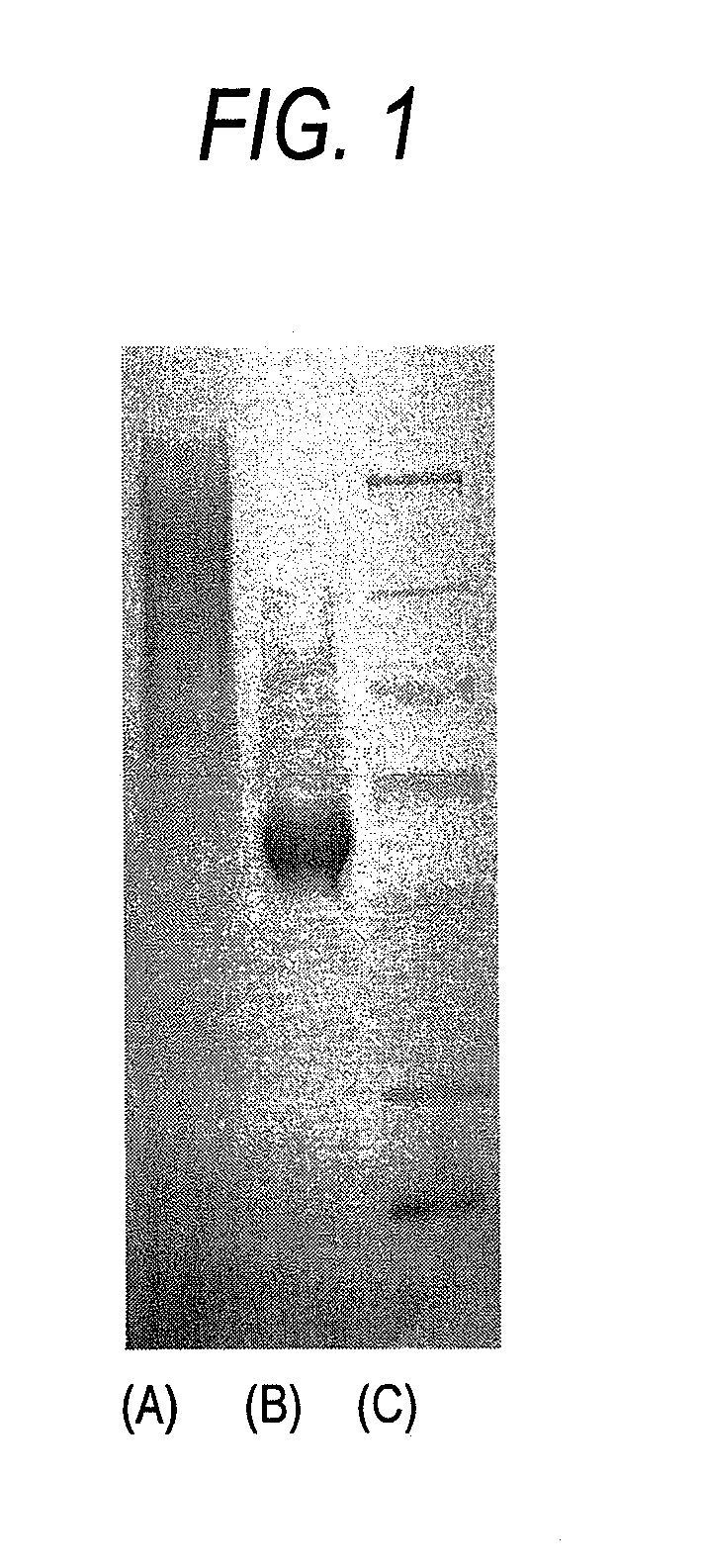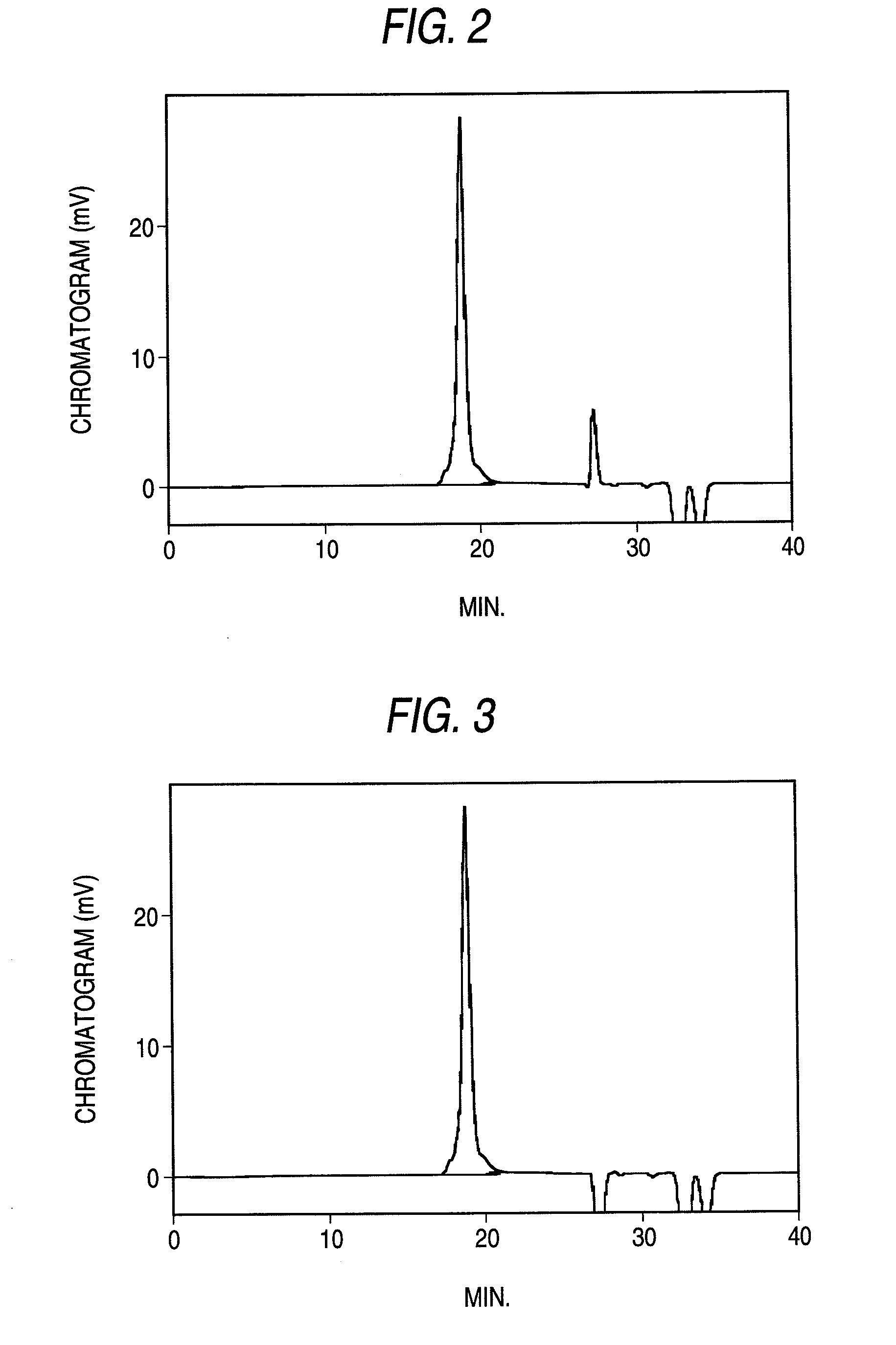Modified bio-related substance, process for producing the same, and intermediate
a bio-related substance and process technology, applied in the field of bio-related substances, can solve the problems of few reactive functional groups that can be used for the modification of polyethylene glycol, the inability to achieve sufficient pharmacological effects, and the inability to demonstrate the own function and efficacy
- Summary
- Abstract
- Description
- Claims
- Application Information
AI Technical Summary
Benefits of technology
Problems solved by technology
Method used
Image
Examples
example 1
Synthesis of Compound (p)
Case of R=Methyl Group, A1O, A2O=Oxyethylene Group, N=0, and Molecular Weight=about 10000
example 1-1
[0162]To a 1000 ml round-bottom flask fitted with a thermometer, a nitrogen-introducing tube, and a stirrer were added 132.2 g (1.0 mol) of 2,2-dimethyl-1,3-dioxolane-4-methanol, 231.4 g (1.2 mol) of a 28% methanol solution of sodium methoxide, and 500 ml of toluene. With introduction of nitrogen thereinto, the toluene was refluxed under reduced pressure for 1 hour to remove the methanol by distillation. With maintaining the solution at 80° C., 126.6 g (1.0 mol) of benzyl chloride was added dropwise over a period of 2 hours using a dropping funnel, followed by further 2 hours of reaction. The solvent was removed from the reaction liquid and the residue was purified by distillation (b.p. 93-95° C. / 266 Pa) to obtain 4-(benzyloxymethyl)-2,2-dimethyl-1,3-dioxolane.
[0163]1H-NMR (CDCl3, internal standard: TMS) δ (ppm): 1.36, 1.42 (3H, 3H, s, C(CH3)2), 3.45-3.57 (2H, m, CH2O—C(CH3)2), 3.73-3.76 (1H, m, CHO—C(CH3)2), 4.03-4.07, 4.28-4.32 (2H, m, CH2O—CH2Ph), 4.57 (2H, q, —CH2Ph), 7.15-7.40 ...
example 1-2
[0164]Into a 1 L beaker were weighed 222 g (1.0 mol) of 4-(benzyloxymethyl)-2,2-dimethyl-1,3-dioxolane purified in Example 1-1, 250 ml of ethanol, and 400 ml of distilled water, and the whole was adjusted to pH 2 with phosphoric acid. With introduction of nitrogen thereinto, the solution was heated to 70° C. After 1.5 hours of reaction, the solution was adjusted to pH 7.0 with sodium hydroxide, the resulting salts were adsorbed onto an adsorbent “KYOWAAD 1000” (manufactured by Kyowa Chemical Industry Co., Ltd.), and the solvent was removed to obtain 3-benzyloxy-1,2-propanediol.
[0165]1H-NMR (CDCl3, internal standard: TMS) δ (ppm): 3.50-3.71 (4H, m, CH2OH, CH2O—CH2Ph), 3.86-3.91 (1H, m, CHOH), 4.54 (2H, m, —CH2Ph), 7.27-7.38 (5H, m, —CH2Ph).
PUM
 Login to View More
Login to View More Abstract
Description
Claims
Application Information
 Login to View More
Login to View More - R&D
- Intellectual Property
- Life Sciences
- Materials
- Tech Scout
- Unparalleled Data Quality
- Higher Quality Content
- 60% Fewer Hallucinations
Browse by: Latest US Patents, China's latest patents, Technical Efficacy Thesaurus, Application Domain, Technology Topic, Popular Technical Reports.
© 2025 PatSnap. All rights reserved.Legal|Privacy policy|Modern Slavery Act Transparency Statement|Sitemap|About US| Contact US: help@patsnap.com



